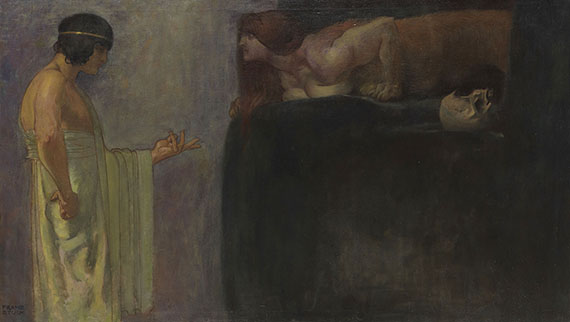Dictionary


Italian Renaissance
The term Renaissance (French for "rebirth") refers to a cultural and art historical epoch in Europe between circa 1400-1600. It followed the Gothic period and preceded Baroque. A distinction is generally made between the early Renaissance (until 1500), the High Renaissance (until 1520/30), and the late Renaissance (also Mannerism) until 1600, although these dates can vary, and are fluid. Italy is considered the cradle of the Renaissance.
The term "Renaissance" was first used during the late 19th century in the writings of Jacob Burckhardt and Jules Michelet. However, Giorgio Vasari divided up the first volume of his "Lives of the Artists", (1550) according to stylistic epochs, and referred to a "rebirth" (rinascita) of art following the end of the Middle Ages, when the outmoded formal language of Byzantine art was overcome. This new understanding of art, incorporated consistent references to antiquity, with its ideal proportions and harmonious measurements. Artists, state theoreticians, and speakers all turned to the inheritance of the antique.
An antipole to the reception of antiquity was the attempts to discover the world and all its phenomena. In contrast with the medieval preoccupation with the afterlife, during the Renaissance the research of the earthly present became a central theme. Renaissance artists were primarily concerned with the correct reproduction of space and corporeality. Artists pursued natural scientific and anatomical studies and the new results were recorded in tracts. The artists were thus able to give their work a well-founded theoretical basis. This academic support, and subsequent revaluation of art, transformed artists from craftsmen to artists, thus engendering an enormous increase in their social status.
The term Renaissance (French for "rebirth") refers to a cultural and art historical epoch in Europe between circa 1400-1600. It followed the Gothic period and preceded Baroque. A distinction is generally made between the early Renaissance (until 1500), the High Renaissance (until 1520/30), and the late Renaissance (also Mannerism) until 1600, although these dates can vary, and are fluid. Italy is considered the cradle of the Renaissance.
The term "Renaissance" was first used during the late 19th century in the writings of Jacob Burckhardt and Jules Michelet. However, Giorgio Vasari divided up the first volume of his "Lives of the Artists", (1550) according to stylistic epochs, and referred to a "rebirth" (rinascita) of art following the end of the Middle Ages, when the outmoded formal language of Byzantine art was overcome. This new understanding of art, incorporated consistent references to antiquity, with its ideal proportions and harmonious measurements. Artists, state theoreticians, and speakers all turned to the inheritance of the antique.
An antipole to the reception of antiquity was the attempts to discover the world and all its phenomena. In contrast with the medieval preoccupation with the afterlife, during the Renaissance the research of the earthly present became a central theme. Renaissance artists were primarily concerned with the correct reproduction of space and corporeality. Artists pursued natural scientific and anatomical studies and the new results were recorded in tracts. The artists were thus able to give their work a well-founded theoretical basis. This academic support, and subsequent revaluation of art, transformed artists from craftsmen to artists, thus engendering an enormous increase in their social status.
Offers




